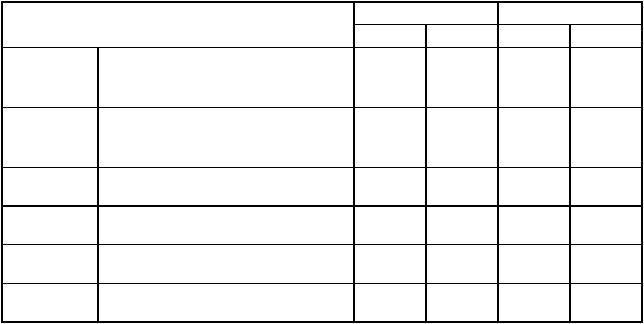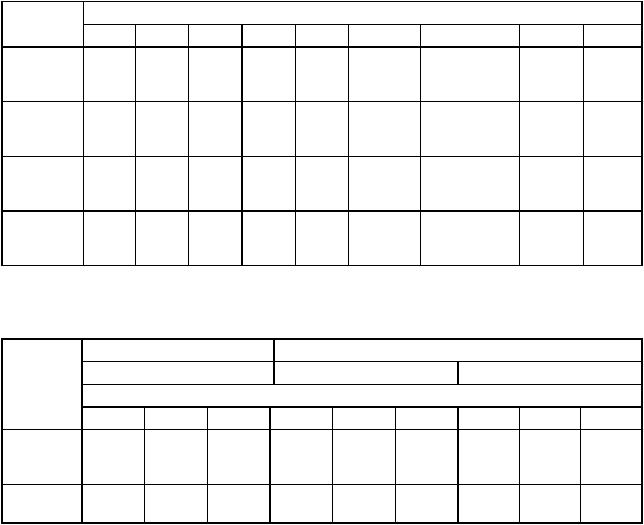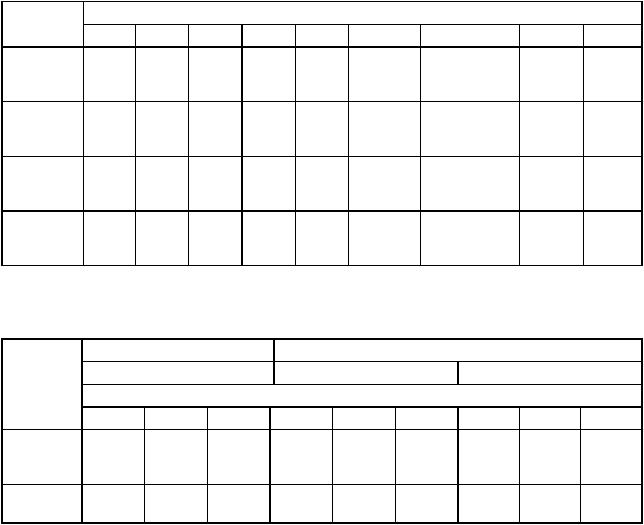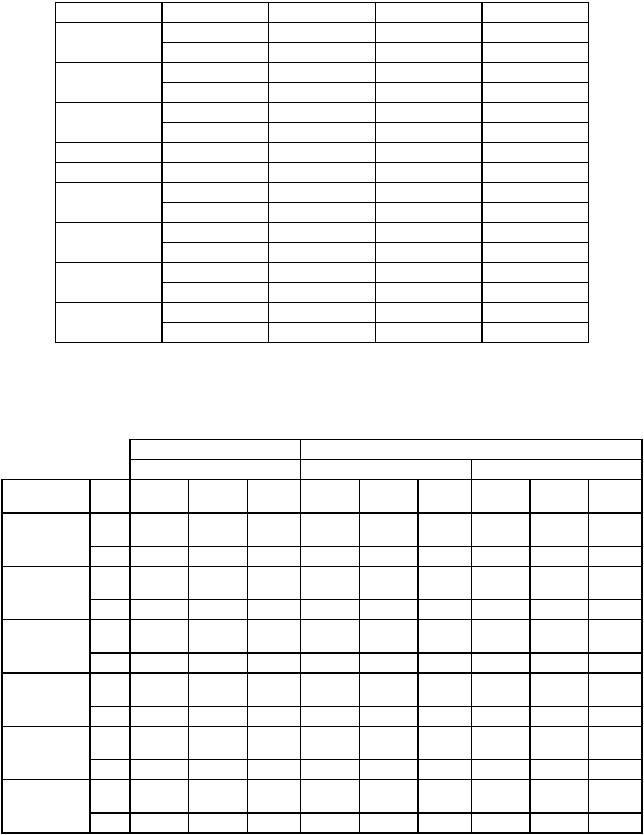
- •Table of Contents
- •List of Illustrations
- •List of Tables
- •2.1 Programmer's Model
- •2.1.2 Supervisor Programmer's Model
- •2.1.3 Status Register
- •2.2 Data Types and Addressing Modes
- •2.3 Data Organization in Registers
- •2.3.1 Data Registers
- •2.3.2 Address Registers
- •2.4 Data Organization in Memory
- •2.5 Instruction Set Summary
- •3.1 Address Bus
- •3.2 Data Bus
- •3.3 Asynchronous Bus Control
- •3.4 Bus Arbitration Control
- •3.6 System Control
- •3.7 M6800 Peripheral Control
- •3.11 Signal Summary
- •4.1 Data Transfer Operations
- •4.1.1 Read Cycle
- •4.1.2 Write Cycle
- •4.2 Other Bus Operations
- •5.1 Data Transfer Operations
- •5.1.1 Read Cycle
- •5.1.2 Write Cycle
- •5.1.4 CPU Space Cycle
- •5.2 Bus Arbitration
- •5.2.1 Requesting the Bus
- •5.2.2 Receiving the Bus Grant
- •5.3 Bus Arbitration Control
- •5.4 Bus Error and Halt Operation
- •5.4.1 Bus Error Operation
- •5.4.2 Retrying the Bus Cycle
- •5.4.4 Double Bus Fault
- •5.5 Reset Operation
- •5.7 Asynchronous Operation
- •5.8 Synchronous Operation
- •6.1 Privilege Modes
- •6.1.1 Supervisor Mode
- •6.1.2 User Mode
- •6.1.3 Privilege Mode Changes
- •6.1.4 Reference Classification
- •6.2 Exception Processing
- •6.2.1 Exception Vectors
- •6.2.2 Kinds of Exceptions
- •6.2.3 Multiple Exceptions
- •6.2.4 Exception Stack Frames
- •6.2.5 Exception Processing Sequence
- •6.3 Processing of Specific Exceptions
- •6.3.1 Reset
- •6.3.2 Interrupts
- •6.3.3 Uninitialized Interrupt
- •6.3.4 Spurious Interrupt
- •6.3.5 Instruction Traps
- •6.3.6 Illegal and Unimplemented Instructions
- •6.3.7 Privilege Violations
- •6.3.8 Tracing
- •6.3.9 Bus Error
- •6.3.10 Address Error
- •7.1 Operand Effective Address Calculation Times
- •7.2 Move Instruction Execution Times
- •7.3 Standard Instruction Execution Times
- •7.4 Immediate Instruction Execution Times
- •7.5 Single Operand Instruction Execution Times
- •7.6 Shift/Rotate Instruction Execution Times
- •7.7 Bit Manipulation Instruction Execution Times
- •7.8 Conditional Instruction Execution Times
- •7.9 JMP, JSR, LEA, PEA, and MOVEM Instruction Execution Times
- •7.10 Multiprecision Instruction Execution Times
- •7.11 Miscellaneous Instruction Execution Times
- •7.12 Exception Processing Execution Times
- •8.1 Operand Effective Address Calculation Times
- •8.2 Move Instruction Execution Times
- •8.3 Standard Instruction Execution Times
- •8.4 Immediate Instruction Execution Times
- •8.5 Single Operand Instruction Execution Times
- •8.6 Shift/Rotate Instruction Execution Times
- •8.7 Bit Manipulation Instruction Execution Times
- •8.8 Conditional Instruction Execution Times
- •8.9 JMP, JSR, LEA, PEA, and MOVEM Instruction Execution Times
- •8.10 Multiprecision Instruction Execution Times
- •8.11 Miscellaneous Instruction Execution Times
- •8.12 Exception Processing Execution Times
- •9.1 Operand Effective Address Calculation Times
- •9.2 Move Instruction Execution Times
- •9.3 Standard Instruction Execution Times
- •9.4 Immediate Instruction Execution Times
- •9.5 Single Operand Instruction Execution Times
- •9.6 Shift/Rotate Instruction Execution Times
- •9.7 Bit Manipulation Instruction Execution Times
- •9.8 Conditional Instruction Execution Times
- •9.10 Multiprecision Instruction Execution Times
- •9.11 Miscellaneous Instruction Execution Times
- •9.12 Exception Processing Execution Times
- •10.1 Maximum Ratings
- •10.2 Thermal Characteristics
- •10.3 Power Considerations
- •10.4 CMOS Considerations
- •10.5 AC Electrical Specification Definitions
- •10.6 MC68000/68008/68010 DC Electrical Characteristics
- •10.7 DC Electrical Characteristics
- •10.13 MC68EC000 DC Electrical Specifications
- •11.1 Pin Assignments
- •11.2 Package Dimensions

9.1 OPERAND EFFECTIVE ADDRESS CALCULATION TIMES
Table 9-1 lists the numbers of clock periods required to compute the effective addresses for instructions. The totals include fetching any extension words, computing the address, and fetching the memory operand. The total number of clock periods, the number of read cycles, and the number of write cycles (zero for all effective address calculations) are shown in the previously described format.
Table 9-1. Effective Address Calculation Times
|
|
Byte, Word |
|
Long |
|
|
Addressing Mode |
Fetch |
No Fetch |
Fetch |
No Fetch |
|
Register |
|
|
|
|
Dn |
Data Register Direct |
0(0/0) |
— |
0(0/0) |
— |
An |
Address Register Direct |
0(0/0) |
— |
0(0/0) |
— |
|
Memory |
|
|
|
|
(An) |
Address Register Indirect |
4(1/0) |
2(0/0) |
8(2/0) |
2(0/0) |
(An)+ |
Address Register Indirect with Postincrement |
4(1/0) |
4(0/0) |
8(2/0) |
4(0/0) |
–(An) |
Address Register Indirect with Predecrement |
6(1/0) |
4(0/0) |
10(2/0) |
4(0/0) |
(d 16, An) |
Address Register Indirect with Displacement |
8(2/0) |
4(0/0) |
12(3/0) |
4(1/0) |
(d 8, An, Xn)* |
Address Register Indirect with Index |
10(2/0) |
8(1/0) |
14(3/0) |
8(1/0) |
(xxx).W |
Absolute Short |
8(2/0) |
4(1/0) |
12(3/0) |
4(1/0) |
(xxx).L |
Absolute Long |
12(3/0) |
8(2/0) |
16(4/0) |
8(2/0) |
(d 16, PC) |
Program Counter Indirect with Displacement |
8(2/0) |
— |
12(3/0) |
— |
(d 8, PC, Xn)* |
Program Counter Indirect with Index |
10(2/0) |
— |
14(3/0) |
— |
#<data> |
Immediate |
4(1/0) |
— |
8(2/0) |
— |
*The size of the index register (Xn) does not affect execution time.
9.2 MOVE INSTRUCTION EXECUTION TIMES
Tables 9-2, 9-3, 9-4, and 9-5 list the numbers of clock periods for the move instructions. The totals include instruction fetch, operand reads, and operand writes. The total number of clock periods, the number of read cycles, and the number of write cycles are shown in the previously described format.
9-2 |
M68000 8-/16-/32-BIT MICROPROCESSORS USER'S MANUAL |
MOTOROLA |

Table 9-2. Move Byte and Word Instruction Execution Times
|
|
|
|
|
Destination |
|
|
|
|
Source |
Dn |
An |
(An) |
(An)+ |
–(An) |
(d16, An) |
(d8, An, Xn)* |
(xxx).W |
(xxx).L |
Dn |
4(1/0) |
4(1/0) |
8(1/1) |
8(1/1) |
8(1/1) |
12(2/1) |
14(2/1) |
12(2/1) |
16(3/1) |
An |
4(1/0) |
4(1/0) |
8(1/1) |
8(1/1) |
8(1/1) |
12(2/1) |
14(2/1) |
12(2/1) |
16(3/1) |
(An) |
8(2/0) |
8(2/0) |
12(2/1) |
12(2/1) |
12(2/1) |
16(3/1) |
18(3/1) |
16(3/1) |
20(4/1) |
(An)+ |
8(2/0) |
8(2/0) |
12(2/1) |
12(2/1) |
12(2/1) |
16(3/1) |
18(3/1) |
16(3/1) |
20(4/1) |
–(An) |
10(2/0) |
10(2/0) |
14(2/1) |
14(2/1) |
14(2/1) |
18(3/1) |
20(3/1) |
18(3/1) |
22(4/1) |
(d 16, An) |
12(3/0) |
12(3/0) |
16(3/1) |
16(3/1) |
16(3/1) |
20(4/1) |
22(4/1) |
20(4/1) |
24(5/1) |
(d 8, An, Xn)* |
14(3/0) |
14(3/0) |
18(3/1) |
18(3/1) |
18(3/1) |
22(4/1) |
24(4/1) |
22(4/1) |
26(5/1) |
(xxx).W |
12(3/0) |
12(3/0) |
16(3/1) |
16(3/1) |
16(3/1) |
20(4/1) |
22(4/1) |
20(4/1) |
24(5/1) |
(xxx).L |
16(4/0) |
16(4/0) |
20(4/1) |
20(4/1) |
20(4/1) |
24(5/1) |
26(5/1) |
24(5/1) |
28(6/1) |
(d 16, PC) |
12(3/0) |
12(3/0) |
16(3/1) |
16(3/1) |
16(3/1) |
20(4/1) |
22(4/1) |
20(4/1) |
24(5/1) |
(d 8, PC, Xn)* |
14(3/0) |
14(3/0) |
18(3/1) |
18(3/1) |
18(3/1) |
22(4/1) |
24(4/1) |
22(4/1) |
26(5/1) |
#<data> |
8(2/0) |
8(2/0) |
12(2/1) |
12(2/1) |
12(2/1) |
16(3/1) |
18(3/1) |
16(3/1) |
20(4/1) |
*The size of the index register (Xn) does not affect execution time.
Table 9-3. Move Byte and Word Instruction Loop Mode Execution Times
|
|
Loop Continued |
|
|
Loop Terminated |
|
|
||
|
Valid Count, cc False |
Valid count, cc True |
|
Expired Count |
|
||||
|
|
|
|
|
Destination |
|
|
|
|
Source |
(An) |
(An)+ |
–(An) |
(An) |
(An)+ |
–(An) |
(An) |
(An)+ |
–(An) |
Dn |
10(0/1) |
10(0/1) |
— |
18(2/1) |
18(2/1) |
— |
16(2/1) |
16(2/1) |
— |
An* |
10(0/1) |
10(0/1) |
— |
18(2/1) |
18(2/1) |
— |
16(2/1) |
16(2/1) |
— |
(An) |
14(1/1) |
14(1/1) |
16(1/1) |
20(3/1) |
20(3/1) |
22(3/1) |
18(3/1) |
18(3/1) |
20(3/1) |
(An)+ |
14(1/1) |
14(1/1) |
16(1/1) |
20(3/1) |
20(3/1) |
22(3/1) |
18(3/1) |
18(3/1) |
20(3/1) |
–(An) |
16(1/1) |
16(1/1) |
18(1/1) |
22(3/1) |
22(3/1) |
24(3/1) |
20(3/1) |
20(3/1) |
22(3/1) |
*Word only.
MOTOROLA |
M68000 8-/16-/32-BIT MICROPROCESSORS USER’S MANUAL |
9-3 |

Table 9-4. Move Long Instruction Execution Times
|
|
|
|
|
Destination |
|
|
|
|
Source |
Dn |
An |
(An) |
(An)+ |
–(An) |
(d16, An) |
(d8, An, Xn)* |
(xxx).W |
(xxx).L |
Dn |
4(1/0) |
4(1/0) |
12(1/2) |
12(1/2) |
14(1/2) |
16(2/2) |
18(2/2) |
16(2/2) |
20(3/2) |
An |
4(1/0) |
4(1/0) |
12(1/2) |
12(1/2) |
14(1/2) |
16(2/2) |
18(2/2) |
16(2/2) |
20(3/2) |
(An) |
12(3/0) |
12(3/0) |
20(3/2) |
20(3/2) |
20(3/2) |
24(4/2) |
26(4/2) |
24(4/2) |
28(5/2) |
(An)+ |
12(3/0) |
12(3/0) |
20(3/2) |
20(3/2) |
20(3/2) |
24(4/2) |
26(4/2) |
24(4/2) |
28(5/2) |
–(An) |
14(3/0) |
14(3/0) |
22(3/2) |
22(3/2) |
22(3/2) |
26(4/2) |
28(4/2) |
26(4/2) |
30(5/2) |
(d 16, An) |
16(4/0) |
16(4/0) |
24(4/2) |
24(4/2) |
24(4/2) |
28(5/2) |
30(5/2) |
28(5/2) |
32(6/2) |
(d 8, An, Xn)* |
18(4/0) |
18(4/0) |
26(4/2) |
26(4/2) |
26(4/2) |
30(5/2) |
32(5/2) |
30(5/2) |
34(6/2) |
(xxx).W |
16(4/0) |
16(4/0) |
24(4/2) |
24(4/2) |
24(4/2) |
28(5/2) |
30(5/2) |
28(5/2) |
32(6/2) |
(xxx).L |
20(5/0) |
20(5/0) |
28(5/2) |
28(5/2) |
28(5/2) |
32(6/2) |
34(6/2) |
32(6/2) |
36(7/2) |
(d 16, PC) |
16(4/0) |
16(4/0) |
24(4/2) |
24(4/2) |
24(4/2) |
28(5/2) |
30(5/2) |
28(5/2) |
32(5/2) |
(d 8, PC, Xn)* |
18(4/0) |
18(4/0) |
26(4/2) |
26(4/2) |
26(4/2) |
30(5/2) |
32(5/2) |
30(5/2) |
34(6/2) |
#<data> |
12(3/0) |
12(3/0) |
20(3/2) |
20(3/2) |
20(3/2) |
24(4/2) |
26(4/2) |
24(4/2) |
28(5/2) |
*The size of the index register (Xn) does not affect execution time.
Table 9-5. Move Long Instruction Loop Mode Execution Times
|
|
Loop Continued |
|
|
Loop Terminated |
|
|
||
|
Valid Count, cc False |
Valid count, cc True |
|
Expired Count |
|
||||
|
|
|
|
|
Destination |
|
|
|
|
Source |
(An) |
(An)+ |
–(An) |
(An) |
(An)+ |
–(An) |
(An) |
(An)+ |
–(An) |
Dn |
14(0/2) |
14(0/2) |
— |
20(2/2) |
20(2/2) |
— |
18(2/2) |
18(2/2) |
— |
An |
14(0/2) |
14(0/2) |
— |
20(2/2) |
20(2/2) |
— |
18(2/2) |
18(2/2) |
— |
(An) |
22(2/2) |
22(2/2) |
24(2/2) |
28(4/2) |
28(4/2) |
30(4/2) |
24(4/2) |
24(4/2) |
26(4/2) |
(An)+ |
22(2/2) |
22(2/2) |
24(2/2) |
28(4/2) |
28(4/2) |
30(4/2) |
24(4/2) |
24(4/2) |
26(4/2) |
–(An) |
24(2/2) |
24(2/2) |
26(2/2) |
30(4/2) |
30(4/2) |
32(4/2) |
26(4/2) |
26(4/2) |
28(4/2) |
9.3 STANDARD INSTRUCTION EXECUTION TIMES
The numbers of clock periods shown in tables 9-6 and 9-7 indicate the times required to perform the operations, store the results, and read the next instruction. The total number of clock periods, the number of read cycles, and the number of write cycles are shown in the previously described format. The number of clock periods, the number of read cycles, and the number of write cycles, respectively, must be added to those of the effective address calculation where indicated by a plus sign (+).
In Tables 9-6 and 9-7, the following notation applies:
An — Address register operand Sn — Data register operand
ea — An operand specified by an effective address
M — Memory effective address operand
9-4 |
M68000 8-/16-/32-BIT MICROPROCESSORS USER'S MANUAL |
MOTOROLA |

Table 9-6. Standard Instruction Execution Times
Instruction |
Size |
op<ea>, An*** |
op<ea>, Dn |
op Dn, <M> |
ADD/ADDA |
Byte, Word |
8(1/0)+ |
4(1/0)+ |
8(1/1)+ |
|
Long |
6(1/0)+ |
6(1/0)+ |
12(1/2)+ |
AND |
Byte, Word |
— |
4(1/0)+ |
8(1/1)+ |
|
Long |
— |
6(1/0)+ |
12(1/2)+ |
CMP/CMPA |
Byte, Word |
6(1/0)+ |
4(1/0)+ |
— |
|
Long |
6(1/0)+ |
6(1/0)+ |
— |
DIVS |
— |
— |
122(1/0)+ |
— |
DIVU |
— |
— |
108(1/0)+ |
— |
EOR |
Byte, Word |
— |
4(1/0)** |
8(1/1)+ |
|
Long |
— |
6(1/0)** |
12(1/2)+ |
MULS/MULU |
— |
— |
42(1/0)+* |
— |
|
— |
— |
40(1/0)* |
— |
OR |
Byte, Word |
— |
4(1/0)+ |
8(1/1)+ |
|
Long |
— |
6(1/0)+ |
12(1/2)+ |
SUB/SUBA |
Byte, Word |
8(1/0)+ |
4(1/0)+ |
8(1/1)+ |
|
Long |
6(1/0)+ |
6(1/0)+ |
12(1/2)+ |
+ Add effective address calculation time.
*Indicates maximum value.
**Only available address mode is data register direct.
***Word or long word only.
Table 9-7 Standard Instruction Loop Mode Execution Times
|
|
Loop Continued |
|
|
Loop Terminated |
|
|
|||
|
|
Valid Count cc False |
Valid Count cc True |
Expired Count |
||||||
|
|
op<ea>, |
op<ea>, |
op Dn, |
op<ea>, |
op<ea>, |
op Dn, |
op<ea>, |
op<ea>, |
op Dn, |
Instruction |
Size |
An* |
Dn |
<ea> |
An* |
Dn |
<ea> |
An* |
Dn |
<ea> |
ADD |
Byte, |
18(1/0) |
16(1/0) |
16(1/1) |
24(3/0) |
22(3/0) |
22(3/1) |
22(3/0) |
20(3/0) |
20(3/1) |
|
Word |
|
|
|
|
|
|
|
|
|
|
Long |
22(2/0) |
22(2/0) |
24(2/2) |
28(4/0) |
28(4/0) |
30(4/2) |
26(4/0) |
26(4/0) |
28(4/2) |
AND |
Byte, |
— |
16(1/0) |
16(1/1) |
— |
22(3/0) |
22(3/1) |
— |
20(3/0) |
20(3/1) |
|
Word |
|
|
|
|
|
|
|
|
|
|
Long |
— |
22(2/0) |
24(2/2) |
— |
28(4/0) |
30(4/2) |
— |
26(4/0) |
28(4/2) |
CMP |
Byte, |
12(1/0) |
12(1/0) |
— |
18(3/0) |
18(3/0) |
— |
16(3/0) |
16(4/0) |
— |
|
Word |
|
|
|
|
|
|
|
|
|
|
Long |
18(2/0) |
18(2/0) |
— |
24(4/0) |
24(4/0) |
— |
20(4/0) |
20(4/0) |
— |
EOR |
Byte, |
— |
— |
16(1/0) |
— |
— |
22(3/1) |
— |
— |
20(3/1) |
|
Word |
|
|
|
|
|
|
|
|
|
|
Long |
— |
— |
24(2/2) |
— |
— |
30(4/2) |
— |
— |
28(4/2) |
OR |
Byte, |
— |
16(1/0) |
16(1/0) |
— |
22(3/0) |
22(3/1) |
— |
20(3/0) |
20(3/1) |
|
Word |
|
|
|
|
|
|
|
|
|
|
Long |
— |
22(2/0) |
24(2/2) |
— |
28(4/0) |
30(4/2) |
— |
26(4/0) |
28(4/2) |
SUB |
Byte, |
18(1/0) |
16(1/0) |
16(1/1) |
24(3/0) |
22(3/0) |
22(3/1) |
22(3/0) |
20(3/0) |
20(3/1) |
|
Word |
|
|
|
|
|
|
|
|
|
|
Long |
22(2/0) |
20(2/0) |
24(2/2) |
28(4/0) |
26(4/0) |
30(4/2) |
26(4/0) |
24(4/0) |
28(4/2) |
*Word or long word only.
<ea> may be (An), (An)+, or –(An) only. Add two clock periods to the table value if <ea> is –(An).
MOTOROLA |
M68000 8-/16-/32-BIT MICROPROCESSORS USER’S MANUAL |
9-5 |
